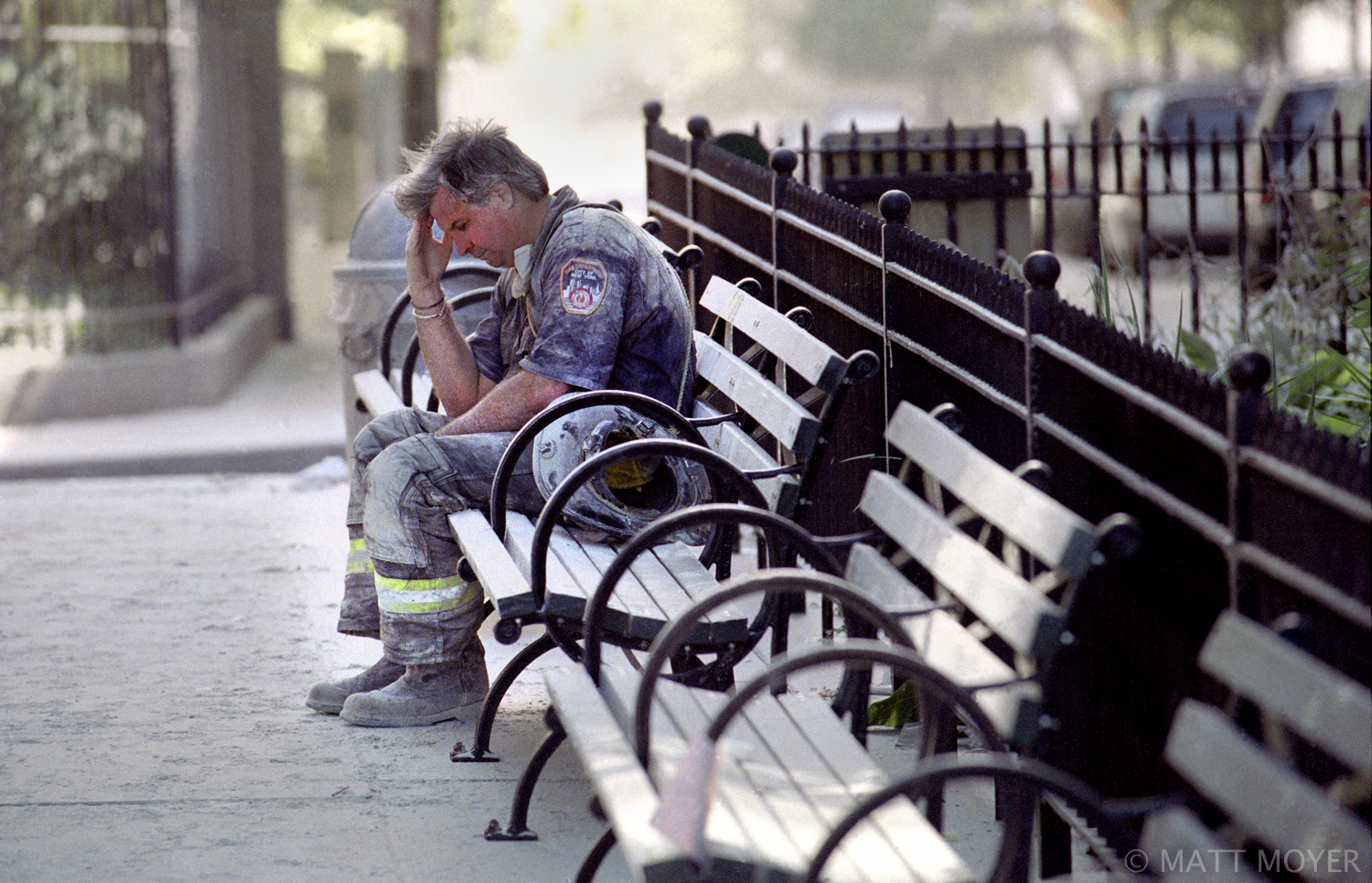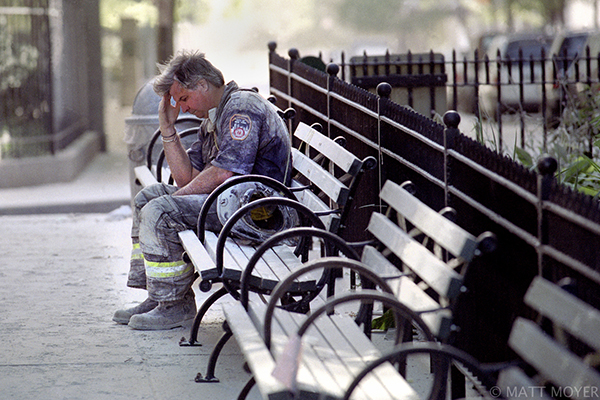Ottaway Q&A: Photojournalist Matt Moyer shares stories from 20+ year career
By Claire Liebowitz ’22
On Feb. 25, students and members of the SUNY New Paltz community had the opportunity to meet award-winning photojournalist Matt Moyer, the 2020 James H. Ottaway Sr. Visiting Professor of Journalism, at a Q & A hosted by Interim Provost Barbara Lyman.
Moyer shared experiences from his more than two decades of experience working for and contributing to outlets including The Washington Post, The Guardian, The New York Times and National Geographic.
Drawing from his work documenting events including the war in Iraq and the attacks of Sept. 11, 2001, Moyer discussed the moral standards and best practices he upholds in his journalistic practice, especially when photographing vulnerable people.

As Ottaway Visiting Professor, Moyer is teaching the upper-level journalism seminar “The Picture Story,” which focuses on digital storytelling.
He is also working on a documentary titled “Inheritance” exploring America’s opioid epidemic, and will host a screening from that in-progress film on April 7.
Use this link to read more about Matt Moyer’s career, and see examples of his work at http://www.mattmoyer.com/.
The following are selected excerpts of Moyer’s responses to questions asked at the Feb. 25 Q & A event.
How do subjects who, in some cases, are really vulnerable and, in other cases, are heavily armed, respond to your camera? How do you persuade them to let you photograph them in unscripted, sometimes unflattering moments?
“First and foremost, it’s important to believe in what you’re doing. I have times where I certainly struggle with what impact I’m having, what impact my work has. Those are healthy questions to ask because ultimately you don’t want to be exploiting the people that you are photographing.
“I think that when people are vulnerable and you’re photographing them in a vulnerable situation, the key is to really tune in and have your body language and facial expression monitors on high alert. That goes for people with guns, certainly. But it also goes for people who are in very difficult, traumatic situations.”

To the early years of the war in Iraq, to the aftermath of 9/11, did you sense these events’ historical importance at the time?
“Photographing on 9/11 at Ground Zero was, for me, incredibly difficult and chaotic, and there’s parts of that day that I don’t remember very well. It was so intense. I remember running to get to Ground Zero, running to get out of the subway stop. I came up and I saw that there was only one building, and it didn’t register. I remember looking at it and it never registered. ‘Where’s the other building?’
“There was another photographer named James Nachtwey who was the preeminent war photographer, certainly, in my lifetime. He just happened to be in New York on that day, and his pictures are incredible. With his experience, I’m guessing, he was able to step outside of the event happening in front of him and see it from a much larger perspective. I was not able to do that until later, like covering the Iraq War, I was able to see a little bit more, with more clarity, what the events meant.
What is the role of professional editorial photography in the age of the camera phone? Why do we still need professional photographers, assuming we do, when we’re theoretically all photographers?
“I think that we are all photographers. But, to turn the question back, everyone has a pen and paper, right? Why do we need Hemingway? The thing that’s different is that we can pick up the camera phone and take a picture and it’s instantaneous, and we’re like ‘That was easy! I nailed it!’ And anybody who’s just starting out writing can write a sentence and they’re like ‘ah, nailed it!’ But after a while, when you’ve actually learned something, you’re like ‘ew, I didn’t even get close and I have to write that sentence 150 more times to get it even decent.’”
More information about the Ottaway Visiting Professorship can be accessed online.

